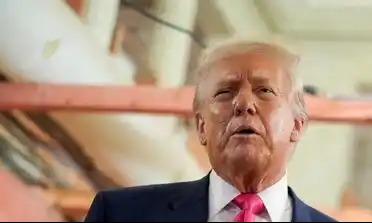What's Happening?
Several Federal Reserve officials have voiced skepticism regarding a potential rate cut during the upcoming December Federal Open Market Committee (FOMC) meeting. Notable figures such as Atlanta Fed President
Raphael Bostic and Minneapolis Fed President Neel Kashkari have highlighted ongoing inflation concerns, which remain above the Fed's 2% target. Bostic has announced his retirement at the end of his term in February 2026. The uncertainty is compounded by a data blackout from the Labor Department due to a government shutdown, affecting inflation and labor market statistics. Recent data indicates a Consumer Price Index (CPI) inflation rate of 3% and an unemployment rate of 4.3% for September. The probability of a 25 basis point rate cut in December has decreased to 53.6%, a significant drop from previous estimates.
Why It's Important?
The hesitation among Federal Reserve officials to proceed with a rate cut reflects broader economic uncertainties, particularly concerning inflation and labor market stability. A rate cut could potentially stimulate economic activity by lowering borrowing costs, but persistent inflation poses a risk to economic stability. The decision impacts various stakeholders, including businesses and consumers, who may face higher borrowing costs if rates remain unchanged. Additionally, the data blackout from the Labor Department complicates the Fed's ability to make informed decisions, potentially affecting monetary policy and economic forecasts.
What's Next?
The Federal Reserve will continue to monitor economic indicators closely as the December FOMC meeting approaches. Stakeholders, including financial markets and policymakers, will be watching for any shifts in the Fed's stance on interest rates. The outcome of the meeting could influence market dynamics, investment strategies, and economic growth projections. The Fed's decision will likely be influenced by forthcoming data releases and economic developments, including inflation trends and labor market conditions.
Beyond the Headlines
The ongoing debate within the Federal Reserve highlights the challenges of balancing inflation control with economic growth. The situation underscores the complexity of monetary policy in a post-pandemic economy, where traditional indicators may not fully capture economic realities. The Fed's cautious approach may reflect broader concerns about the long-term impacts of inflation and the need for sustainable economic policies.













